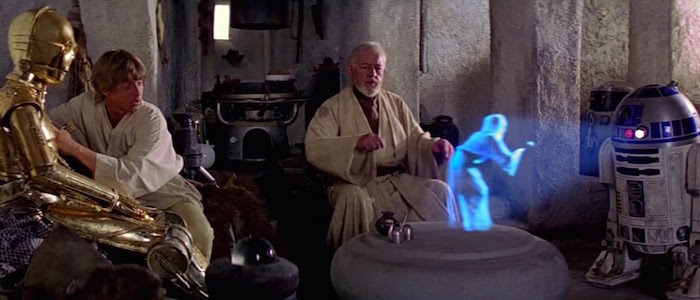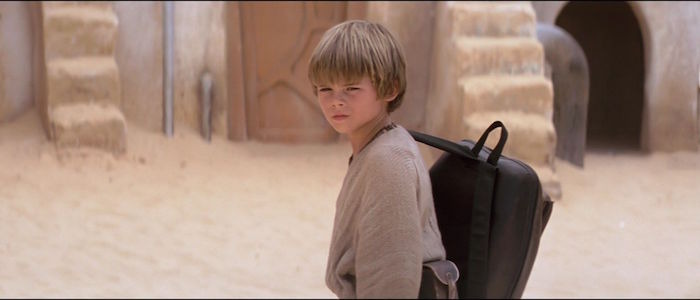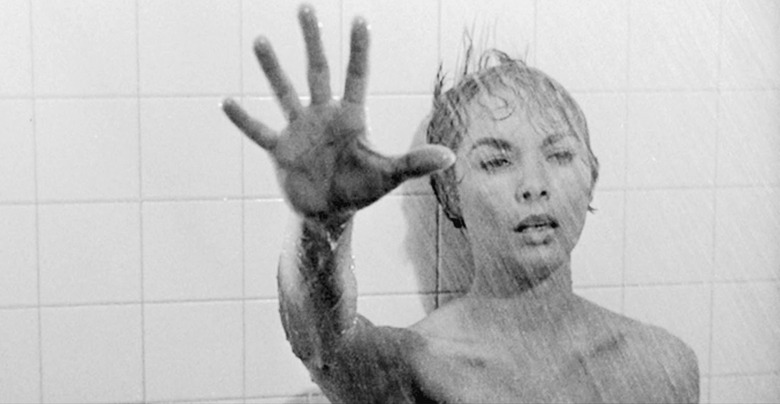How Alfred Hitchcock's 'Psycho' Influenced 'Star Wars'
(Welcome to The Movies That Made Star Wars, a series where we explore the films that inspired George Lucas' iconic universe. In this edition: Alfred Hitchcock's masterpiece Psycho.)Alfred Hitchcock was a master of suspense and one of the masterpieces of his oeuvre was the 1960 film Psycho, starring Anthony Perkins and Janet Leigh. From the beginning, it tells the story of a woman named Marion Crane as played by Janet Leigh. She's stolen a sum of money from her boss and finds herself on the run. She checks into an out of the way hotel in Arizona and meets a man named Norman Bates. This is the last man she'd ever meet. She's murdered by Norman's mother and then the story shifts almost completely to Norman's perspective. Will he be able to help his mother get away with the murder?
It doesn't sound like the sort of film that would have had a meaningful impact on Star Wars, but you'd be surprised where George Lucas and the teams making Star Wars films could draw influence and put it to good use.
The MacGuffin
There's no doubt that this film, among all of the films Hitchcock made, influenced cinema and filmmakers like George Lucas. Hitchcock invented the term "MacGuffin" and added it to the vocabulary of cinema. Just in case you've never heard the term before, a MacGuffin is an item, object, or idea that motivates the protagonists but gets very little narrative explanation or weight. In the 2004 DVD commentary of A New Hope, George Lucas refers to Artoo-Detoo as a MacGuffin. Lucas and Hitchcock definitely differed on the importance of a MacGuffin in their approaches, though. Hitchcock used them as almost disposable, mysterious items with little explanation. George Lucas felt they should have higher stakes, once telling Vanity Fair that he believes that "the MacGuffin should be powerful and that the audience should care about it almost as much as the dueling heroes and villains on-screen."
Which is why we get Artoo with the message from Leia and the plans to the Death Star itself. In Psycho, the MacGuffin is the money Marion stole from her employer. It puts her on the road and into harm's way. But the money becomes unimportant as soon as Marion is murdered and gets drowned with her in the swamp, never to be seen again. For Hitchcock, it set the story in motion and never mattered again.
The Borrowed Musical Cue
One of the most major influences on A New Hope from a Hitchcock film came from a musical cue in Psycho, though it might not seem outwardly apparent.
This particular influence comes from one of the film's editors, Paul Hirsch. Hirsch was the editor who worked for the longest period of time on Star Wars. One of the things an editor will do is lay temporary tracks of music on the soundtrack so they have a rhythm they can cut to. In The Making of Star Wars, Hirsch recounts one of the most infamous examples and how it forever influenced Star Wars. "The scene where they pop out of the hatch in the Falcon, I laid in a very famous piece of Psycho music there. It was a three-note motif that [Martin] Scorsese insisted that [Psycho composer Bernard Herrmann] use in Taxi Driver. It was a dark, ominous three-note motif. Curiously enough, Johnny [Williams]-I don't know if he did it deliberately or what–but it's now incorporated into his cue for that moment in [Star Wars]."
Hirsch went on to win an Academy Award for his work editing Star Wars, alongside Richard Chew and Marcia Lucas.
It just goes to show how influential editors can be on the overall shape of a film, even in decisions that were designed to be temporary. And it proves how a soundtrack, no matter how iconic, can filter in, note-for-note-for-note into an equally iconic soundtrack.
Sympathetic Bad Guys
Psycho really is a masterpiece of cinema and there's no question that it influenced filmmaking from the moment of its release and beyond, even into today. It played with narrative and shifts in point-of-view and really got you to root for and empathize for a bad guy. Was Norman simply dealt a bad hand with his mother, much like Anakin? It's possible.
The Anakin we know is abused by his masters despite his kind an nurturing personality. His slave masters shape this into a competitive streak, then his Jedi masters shape him into a blade, both against his better nature. Both Anakin and Norman begin, presumably, as good and nurturing people, broken by the loss of their mothers and abusive systems. In Norman's case, it was his mother who was abusive, in Anakin's case, it's the nature of his enslavement and the Jedi Order.
Both films ask us to sympathize with monsters and they're better for it.
When Anakin is revealed beneath the helmet of Darth Vader in Return of the Jedi, it's a moment spiritually borrowed from Psycho where we see the real killer is just a damaged man in a costume. Although we all understand that both of these characters were evil, we can't help but want them whole after these reveals.
Coda
Psycho might be one of the best of films in Alfred Hitchcock's filmography. Shot on a shoestring budget with the crew from his television series, Hitchcock set out to challenge himself and, in turn, he challenged an audience to watch a film made of pure cinema. The editing in Psycho (save for the last ten minutes) is sharp and something any student of film should study. The film is tense and startling in equal measure, grim to be sure. Hitchcock is playing with the audience with every shot and it's an amazing thing to see. It's not a flawless Hitchcock film, by any means, but that doesn't mean it's not great.
For those interested in a well-rounded view of cinema and to a small piece of Star Wars inspiration, Psycho is definitely a movie that should be high on your watchlist if you haven't seen it. And if you have, it's always the right time to go back and revisit the work of the Master of Suspense.



